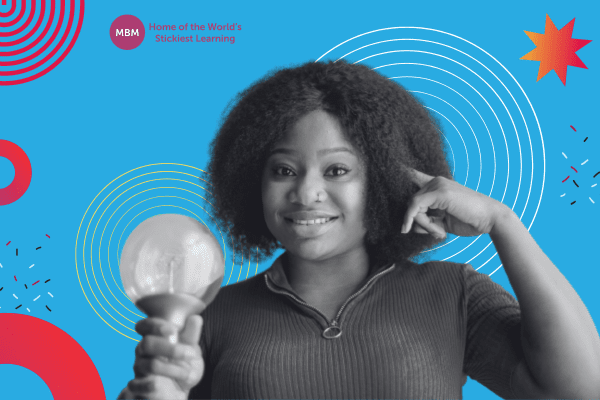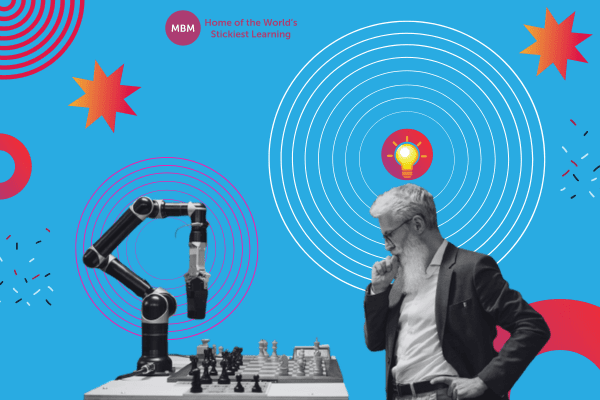Fostering Workplace Innovation Through Creative Training
In one office, employees diligently work but lack excitement and creativity. Meanwhile in another, the same employees are energised, engaged in lively discussions, and participate in innovative training activities that ignite their imagination and fuel their innovative thinking. Furthermore, this transformative environment fosters a culture of exploration, breaking free from routine and unlocking the untapped potential within the workforce. Training creatively has a big role to play in all this.
The workspace has transformed into a breeding ground for innovation, and the impact is palpable. In this article, we will explore the power of training creatively and its profound impact on the workspace. Also, we will dive into captivating techniques, share inspiring success stories, and provide practical insights for leaders and employees who seek to unleash their full potential.
So get ready to break free from the chains of routine and discover the transformative possibilities that await through training creatively. The future of work starts here.
The Importance of Creative Training

#1- Breaking the Shackles of Traditional Training
In today’s fast-paced and ever-changing work environment, traditional training methods have become inadequate for equipping employees with the skills they need to thrive. Albeit the rigid structures of lectures, presentations, and mundane e-learning modules, creative training breaks free from these shackles, infusing learning with excitement, innovation, and inspiration.
Additionally, by integrating creative elements into training programs, leaders can foster an environment that nurtures problem-solving, critical thinking, and adaptability—the very skills required to navigate the complexities of the modern workspace. In this way, creative training serves as a powerful tool to unlock the full potential of employees and drive success in organisations.
#2- Unleashing the Power of Imagination
Creativity lies at the core of every successful endeavour. It is the force that drives innovation, propels companies forward, and differentiates them in the market. However, the traditional training approach often neglects the cultivation of creativity.
Creative training techniques unleash the power of imagination by encouraging employees to think outside the box, explore new possibilities, and challenge the status quo. By incorporating interactive exercises, collaborative projects, and immersive experiences, leaders can tap into the wellspring of creativity within their teams, fostering a culture of innovation that propels the organisation towards greater heights.
#3- Nurturing Agility and Resilience
In an era of constant change and disruption, agility and resilience have become vital qualities for both individuals and organisations. Creative training plays a pivotal role in nurturing these qualities by providing employees with the opportunity to experiment, take risks, and adapt to new situations. Through activities such as role-playing, gamification, and improvisation, individuals develop the ability to think on their feet, embrace uncertainty, and find innovative solutions to complex problems.


>> Sticky Learning Coaching Cards <<
Understanding Techniques for Training Creatively
1) Gamification: Turning Learning into Play
Gamification is a powerful technique that transforms learning into a captivating and interactive experience. By incorporating game elements such as rewards, challenges, and competition, leaders can engage employees on a deeper level, making training sessions more enjoyable and memorable.
Whether it’s through online quizzes, team-based simulations, or even mobile apps, gamification instils a sense of excitement, fosters healthy competition, and motivates individuals to actively participate and retain knowledge. By harnessing the innate human desire for achievement and progress, gamification enhances engagement and empowers employees to take charge of their own learning journey.
2) Role-playing: Embodying New Perspectives
Role-playing is a dynamic training technique that immerses participants in simulated scenarios, allowing them to step into different roles and perspectives. This experiential approach not only enhances understanding but also builds essential skills such as empathy, communication, and problem-solving. By assuming different characters, employees gain valuable insights into diverse viewpoints, learn to navigate challenging interactions and develop effective strategies for conflict resolution. Furthermore, role-playing serves as a powerful tool for honing interpersonal skills, fostering collaboration, and preparing individuals for real-world situations that require adaptability and quick thinking.
3) Design Thinking: Unleashing Innovation
Design thinking is a human-centred problem-solving approach that fosters innovation by placing emphasis on empathy, creativity, and iteration. Through the stages of empathising, defining, ideating, prototype, and testing, design thinking empowers employees to tackle complex challenges with fresh perspectives.
Moreover, it encourages a multidisciplinary approach, where diverse teams come together to generate a wide range of ideas and solutions. Design thinking also emphasises rapid prototyping and iteration, allowing for quick validation and refinement of concepts. By integrating design thinking into training, leaders equip their teams with a structured yet flexible methodology for innovation, sparking a culture of continuous improvement and imaginative problem-solving.
Fostering a Culture of Innovation

#1. Encouraging Out-of-the-box Thinking
Creative training methods play a crucial role in fostering a culture of innovation by encouraging employees to think outside the box. Moreover, these methods break away from conventional norms and invite individuals to explore unconventional ideas and approaches.
By incorporating brainstorming sessions, idea-generation exercises, and open-ended discussions, leaders create an environment that values and nurtures innovative thinking. This shift in mindset not only encourages employees to challenge existing processes but also inspires them to seek novel solutions and push the boundaries of what is possible.
#2. Embracing Experimentation and Risk-taking
A culture of innovation requires a willingness to experiment and take risks. Creative training provides a safe space for employees to test new ideas, explore uncharted territories, and learn from both successes and failures. Through activities such as prototyping, rapid iterations, and feedback loops, employees develop a growth mindset that embraces experimentation as an integral part of the learning process. By promoting a culture that rewards calculated risk-taking, leaders empower their teams to explore uncharted territory, uncover breakthrough innovations, and drive organisational success.
#3. Cultivating Collaboration and Cross-pollination
Innovation thrives in environments where collaboration and cross-pollination of ideas are encouraged. Creative training methods foster teamwork and collaboration by incorporating interactive group exercises, team-building activities, and interdisciplinary projects. By bringing individuals with diverse backgrounds, skills, and perspectives together, leaders create fertile ground for the exchange of ideas, knowledge sharing, and serendipitous discoveries. This collaborative atmosphere fuels innovation as team members leverage their collective expertise, challenge assumptions, and co-create solutions that are far more powerful than what any individual could achieve alone.
Empowering Employees
Creative training empowers employees by enhancing their problem-solving abilities. By engaging in activities and practical challenges, employees develop critical thinking skills and learn to approach problems from multiple angles, uncovering innovative solutions. Additionally, immersing individuals in hands-on experiences that simulate real-world scenarios enables leaders to empower employees to tackle complex challenges with confidence and resourcefulness.
1- Promoting Collaboration and Teamwork
Creative training methods promote collaboration and teamwork among employees. By incorporating interactive exercises, group projects, and team-based simulations, leaders create opportunities for employees to work together, share ideas, and leverage collective strengths. Additionally, this collaborative environment fosters a sense of unity, encourages open communication, and enables teams to tackle challenges collectively.
2- Encouraging Ownership of Learning and Development
Creative training approaches encourage employees to take ownership of their learning and development. By providing engaging and interactive learning experiences, employees are motivated to actively participate, explore new concepts, and seek continuous improvement. This sense of ownership empowers individuals to drive their own professional growth, take initiative in acquiring new skills, and become lifelong learners. Creative training methods instil a sense of personal responsibility, inspiring employees to invest in their development and contribute to the overall success of the organisation.
Measuring the Effectiveness of Creative Training

#1- Using Qualitative Assessment Methods
To measure the effectiveness of creative training programs, qualitative assessment methods offer valuable insights. Surveys, interviews, and focus groups capture participants’ perceptions, experiences, and subjective feedback. They reveal qualitative aspects of learning, such as increased motivation, confidence, and engagement. Gathering firsthand accounts allows leaders to understand the impact of creative training on individuals and their learning journeys.
#2- Employing Quantitative Evaluation Techniques
In addition to qualitative assessment methods, quantitative evaluation techniques provide measurable data to gauge the effectiveness of creative training programs. These techniques involve the collection and analysis of numerical data, such as pre and post-training assessments, performance metrics, and retention rates.
All in all, by quantifying the outcomes of creative training, leaders can assess the tangible benefits, such as improved skill acquisition, enhanced productivity, and increased innovation within the organisation. These quantitative measures offer valuable insights into the overall effectiveness and return on investment of creative training initiatives.
#3- Long-term Impact on Individuals and Organisations
Measuring the effectiveness of creative training extends beyond immediate outcomes. It is important to evaluate the long-term impact on individuals and organisations. This includes tracking the application of newly acquired skills in day-to-day work, identifying behaviour changes, and assessing the sustained impact on performance and innovation. Longitudinal studies, follow-up surveys, and performance evaluations help leaders understand how creative training contributes to long-lasting changes in individuals’ capabilities, as well as organisational growth and success.
#4- Continuous Improvement and Iteration
Measuring effectiveness is not merely an endpoint but a catalyst for continuous improvement and iteration of creative training programs. Feedback from participants, assessment data, and key insights should inform the refinement of training content, methods, and delivery. By analysing the strengths and weaknesses of the training initiatives, leaders can make informed decisions to enhance the effectiveness and impact of future training programs.

Tips for Leaders and Managers in Implementing Creative Training
1- Foster a Supportive and Safe Environment
Create a supportive and safe environment where employees feel encouraged to explore their creativity. Above all, foster an open culture that values new ideas, diverse perspectives, and risk-taking. Additionally, encourage collaboration, provide constructive feedback, and recognise and reward innovation. By doing so, leaders empower employees to embrace creative training and unleash their full potential within a positive and nurturing environment.
2- Lead by Example
Leaders must lead by example and actively participate in creative training initiatives. Additionally, they should embrace a growth mindset, demonstrate enthusiasm, and actively engage in the learning process alongside employees. By showcasing their own commitment to continuous learning and creativity, leaders set a powerful example for others to follow. Moreover, by leading from the front, leaders inspire and motivate employees to fully embrace and participate in creative training programs, fostering a culture of growth and innovation.
3- Provide Resources and Support
Provide the necessary resources, tools, and support to facilitate creative training. Ensure employees have access to training materials, technology, and opportunities for skill development. Encourage cross-functional collaboration, mentorship, and knowledge sharing. By providing the infrastructure and support, leaders enable employees to fully engage in creative training and leverage their newfound skills and knowledge in their work.
4- Evaluate and Adjust
Continuously evaluate the effectiveness of creative training programs and make adjustments as needed. Seek feedback from employees, analyse data and metrics, and identify areas for improvement. Iterate and refine training methods, content, and delivery based on the insights gained. By taking a proactive and adaptive approach, leaders can enhance the impact and effectiveness of creative training initiatives over time.
These tips empower leaders to cultivate a culture of innovation, enhance employee engagement, and drive organisational success through creative training.
Tips for Employees in Embracing Creative Training
#1- Embrace a Growth Mindset
Adopt a growth mindset and approach creative training with an open and curious mindset. Embrace the opportunity to learn and develop new skills. Emphasise the process of learning and improvement rather than focusing solely on immediate results. By cultivating a growth mindset, employees can maximise the benefits of creative training and unlock their full potential.
#2- Actively Participate
Actively participate in creative training initiatives by fully engaging in activities, discussions, and exercises. Take ownership of your learning journey and seek opportunities to apply newly acquired knowledge and skills. Actively contribute ideas, ask questions, and collaborate with others. By actively participating, employees can make the most out of creative training and enhance their overall learning experience.
#3- Embrace Collaboration
Embrace collaboration with fellow employees during creative training programs. Engage in group projects, discussions, and exercises that encourage teamwork and cooperation. Embrace diverse perspectives, listen actively, and contribute to collective problem-solving. By embracing collaboration, employees can leverage the collective intelligence and creativity of the team, enhancing the effectiveness of creative training.
#4- Embrace Risk-taking
Embrace risk-taking and step out of your comfort zone during creative training. Be willing to explore new ideas, experiment with different approaches, and take calculated risks. Embrace failure as a learning opportunity and a stepping stone to growth. By embracing risk-taking, employees can unlock their creativity, discover innovative solutions, and expand their capabilities.
Overcoming Challenges in Creative Training
1- Managing Time Constraints
One of the challenges in creative training is managing time constraints. Find ways to allocate dedicated time for creative training amidst regular work responsibilities. Prioritise and plan effectively to ensure sufficient time for creative learning and application.
2- Addressing Resistance to Change
Resistance to change can hinder the implementation of creative training. Communicate the benefits, involve employees in the process, and address concerns to alleviate resistance. Emphasise the positive impact of creative training on personal growth, professional development, and organisational success.
3- Adapting to Different Learning Styles
Individuals have diverse learning styles, and catering to them can be a challenge. Incorporate various training methods, such as visual, auditory, and hands-on approaches, to accommodate different learning preferences. Flexibility in delivery methods ensures inclusivity and enhances overall engagement.
By effectively managing time constraints, addressing resistance to change, and adapting to different learning styles, leaders and employees can overcome challenges in implementing creative training. These strategies foster a supportive and inclusive learning environment, maximising the benefits of creative training for individuals and organisations.
Real-life Examples of Creative Training Success Stories

1. Google’s “20% Time”
Google’s “20% Time” policy is a well-known example of creative training in action. Employees are encouraged to dedicate 20% of their work time to pursue projects of their own choice, allowing them to explore their passions and innovative ideas. This policy has led to the creation of successful products such as Gmail and Google Maps. Google’s “20% Time” demonstrates the power of granting employees autonomy and freedom to pursue creative endeavours, resulting in groundbreaking innovations.
2. Pixar’s Braintrust
Pixar, renowned for its creative storytelling and animation, utilises a unique approach called the “Braintrust.” The Braintrust consists of a group of senior creative leaders who provide feedback and constructive criticism on works in progress. This collaborative feedback process encourages open dialogue, trust, and a culture of continuous improvement. Pixar’s Braintrust exemplifies the importance of creating a safe and supportive environment for creative exploration and the value of diverse perspectives in refining and enhancing creative output.
3. IDEO’s Design Thinking Approach
IDEO, a global design consultancy, employs a design thinking approach to foster innovation and creative problem-solving. IDEO’s multidisciplinary teams work collaboratively, utilising a human-centred design process that emphasises empathy, ideation, and prototyping. This approach has resulted in numerous successful and impactful designs, ranging from products to services. IDEO’s example showcases how incorporating design thinking principles into training can ignite creativity, encourage collaboration, and drive innovation across various industries.
Conclusion
In conclusion, creative training in the workplace holds immense potential for fostering innovation, enhancing collaboration, and empowering individuals. By implementing creative training methods, leaders and employees can unlock their creativity, develop essential skills, and drive organisational success. By embracing creative training, leaders and employees can embark on a transformative journey towards a more dynamic and thriving workspace.
Recommended reading: Report on the training industry.




